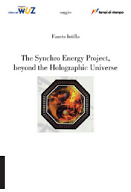Scientists at Cern near Geneva are close to turning on their particle accelerator a year after it blew up. In their latest video, physicists hunting the Higgs boson ask what price society is willing to pay to understand the universe.
A month or so ago I was sat at a table outside the canteen at Cern, the European nuclear research organisation in Switzerland, nursing an espresso and watching an impromptu volleyball match play out across a giant blue magnet daubed with white paint. The graffiti read: "LH...C'est pas sorcier". It's not rocket science.
Maybe it's not, but what the scientists are trying to do at Cern is no easier. The underground accelerator, the Large Hadron Collider, is vast and vastly complex. It's almost no surprise it didn't spring to life and start churning out data as soon as they flicked the on switch this time last year.
I was at Cern to talk to scientists about the long march that is the hunt for the Higgs boson. The particle was predicted 45 years ago. You can think of it as a tell-tale fingerprint that confirms the existence of an extraordinary field that permeates the entirety of space, from the infinitesimal pinch between the constituents of atomic nuclei and the incomprehensible stretches of nothingness that separate galaxies.
The field is a big deal. According to physicists' best theories, it contains energy that it shares with the smallest building blocks of matter, such as electrons and quarks, the latter being the constituents of protons and neutrons in the atomic nucleus. The field gives the particles mass, and in doing so, brings stability and structure to the universe.
There are only two places in the world that have the capability to hunt for the Higgs boson: Fermilab near Chicago and Cern. Today, Fermilab is home to the world's most powerful particle collider, the Tevatron. Cern will take over that title in November, at least they will if they get the LHC up and running this time.
Cern has seen glimpses of what might be the Higgs boson before in 2000, with an older machine that was ripped out of the ground to make room for the Large Hadron Collider. If those glimpses were real, the Higgs is fairly light and could take a long time to find with LHC.
I've written about the Colliding Particles project here before. A team of Higgs hunters at University College London have teamed up with a film maker to produce a series of video shorts that follow their exploits. I can't praise them enough. They blast many full length TV science documentaries out of the water. They have a coherent narrative, they have engaging characters, they let you in on what happens to our £80m-a-year Cern subscription.
In the first video, the team talk about a new way to hunt for the Higgs. In this, their fifth video, it's time to pitch the idea to other Cern physicists. If the idea is accepted, their "Eurostar" idea becomes part of the formal search for the missing particle. As luck would have it, they've roped in that bloke from The Mummy and Four Weddings to do their presentation. Or maybe it's his younger brother.
There's more to it though. The Large Hadron Collider is an expensive beast and in times of global financial meltdown and looming environmental problems, it's not unfair to wonder whether this kind of basic research is a luxury we can't afford. It's a question the physicists ponder and perhaps never fully answer.
The Large Hadron Collider might well be the last machine of its kind that ever gets built. But the fact that it was built is extremely heartening. This is a machine so large it takes hours to jog around. It cost billions of Euros and took many years to build. That governments were willing to pay for it, with no idea what it might or might not find, speaks volumes about the price society is willing to pay to understand more about our place in the universe.















Nessun commento:
Posta un commento